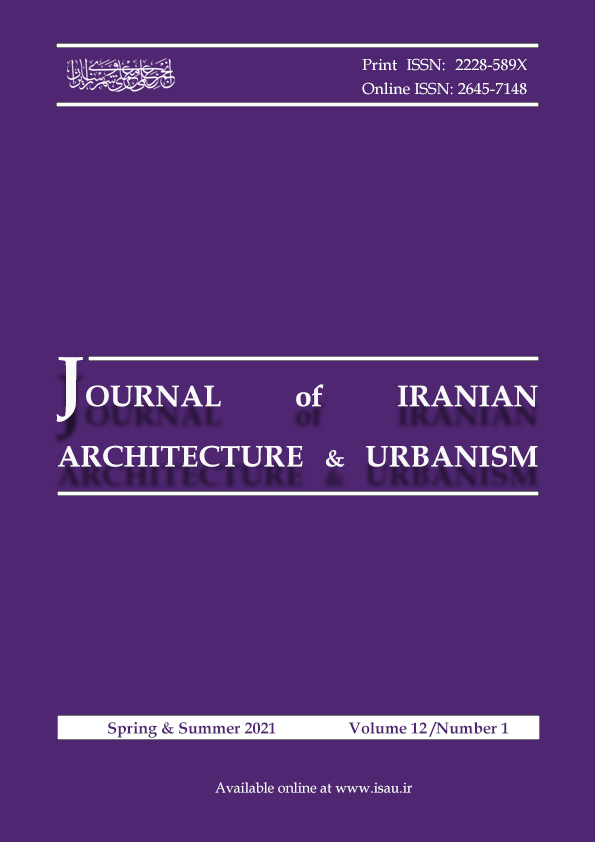Document Type : Original Research Paper
Authors
1 Assistant Professor, Department of Urban Planning & Design, Faculty of Art & Architecture, Shiraz University, Shiraz, Iran.
2 Assistant Professor, Department of Architecture, Faculty of Art & Architecture, Shiraz University, Shiraz, Iran.
Abstract
Extended Abstract
Background and Objectives: Cultivating and teaching the concepts of the sustainable neighborhood to different groups of people has been one of the executive goals in order to achieve sustainable development in different countries. Therefore, the educational content presented in the form of sustainability topics in architecture and urban planning faculties, that are considered as the most important educational context of the concepts of "sustainable city and neighborhood" to future owners of these professions, is very important. The present study seeks to compare the perceptions of architecture and urban planning students from the sustainable neighborhood to be used in providnig the educational content of courses related to the residential complex and neighborhood design in these fields. The results of this analysis can be used in architecture and urban planning faculties to improve the different aspects of "sustainable neighborhood" for students and in architectural and urban planning projects. The main question in this regard is: What are the similarities and differences between architecture and urban planning students in prioritizing sustainable development aspects and indicators and using examples to achieve a sustainable neighborhood?
Methods: In this study, after reviewing the literature, 14 indicators in the form of 5 categories were selected as the indicators of a sustainable neighborhood. The questionnaire was comprised of open and closed questions, which were answered by 27 architecture students and 27 urban planning students at Shiraz University in one semester. The data obtained from the collected questionnaires were analyzed with two quantitative and qualitative approaches for spectral and descriptive questions. In order to analyze the quantitative data after transfering it to SPSS software, the "Friedman" and "Mann-Whitney U Test" were used to rank the indicators in each group and examine the differences between the two groups. Qualitative data were also qualitatively analyzed after their categorization and the formation frequency table.
Findings: According to urban planning students, the indicators of "vegetation and green space," "social interactions," and "attention to pedestrian-based transportation" are the most important in achieving a sustainable neighborhood, and indicators of "indigenous culture patterns," "clean energy" are the least important indicators in the lists. In the process of planning and designing a sustainable neighborhood, these students also pay the most attention and the least attention to the indicators of "pedestrian-based transportation," "providing security," and "promoting social solidarity" in the neighborhood. Architecture students mostly focused on the realization of sustainable neighborhoods according to the indicators of "privacy," "security," "social interactions," and "pedestrian transportation." According to architecture students, the indicators of "mixed user model" and "local employment" were the least important in realizing a sustainable neighborhood. In the design process, the least attention has been paid to these two indicators. These students also paid the most attention to the characteristics of "privacy," "vegetation and green space," and creating a "sense of belonging" in the design. Urban planning students focused more on functional and economical aspects in achieving sustainability, while architecture students paid more attention to the "cultural" aspects. The architecture and urban planning students both considered the indicators of "social interactions" and "security" in recognizing the social indicators of sustainable neighborhoods. Also, in the environmental aspects, "vegetation and green space" in realizing a sustainable neighborhood were recognized as important aspects and they were considered by both groups. In general, paying attention to the physical dimensions and especially the details of space design among architecture students and paying attention to functional and non-physical dimensions among urban planning students is evident in case studies.
Conclusion: Although a part of the differences between architecture and urban planning students is due to the nature and the view of these two disciplines to the concept of "sustainable neighborhood," the consideration of neglected indicators and sustainable aspects in each discipline can contribute to the improvement of students' perception of the sustainable neighborhood. Therefore, paying more attention to the physical aspects and design details and the application of cultural sustainability indicators in teaching sustainable neighborhood design to urban planning students can be effective. In addition, paying more attention to the functional aspects of sustainable neighborhoods and the application of functional indicators in sustainable neighborhood architecture is effective for architecture students. In planning the course of architectural design 5 for architecture students, strengthening the "functional" and "activity" dimensions of the sustainable neighborhood according to the scale and the nature of the discipline and the practical exercises can help the the students to have a comprehensive view of the "sustainable neighborhood." Urban planning students need to further study and explain the "cultural" dimension of the sustainable neighborhood and especially its indigenous dimensions. Paying more attention to physical and aesthetic details in the design, apaprt form the general and functionalist view can lead to a better understanding of sustainable neighborhood.
Graphical Abstract
Highlights
Keywords


